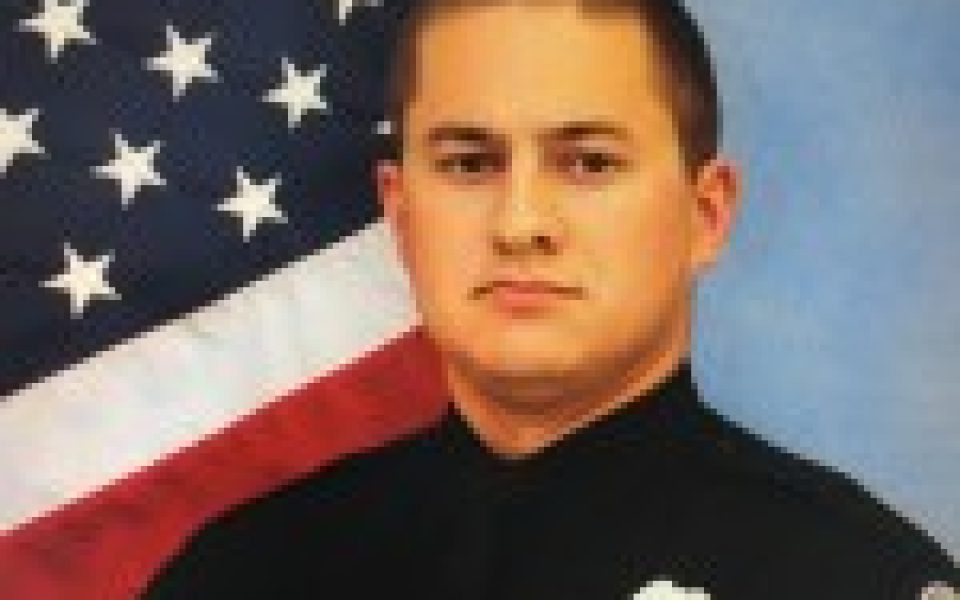UPDATE, 11:57 a.m.: Capt. Steve Tolley, commander of the Winston-Salem Police Department’s criminal investigations division, said a handgun was recovered from the scene and turned over to the State Bureau of Investigation. This story has been revised accordingly.
ORIGINAL POST: A police traffic stop on Bowen Boulevard in northeast Winston-Salem on Friday night ended in the death of a 60-year-old man.
During a struggle between Winston-Salem police Officer DE McGuire and Edward Van McCrae, the officer discharged his firearm and McCrae was pronounced dead at the scene, according to a police press release.
The department describes the incident as an “assault with a firearm on a law enforcement officer,” indicating that the officer became concerned about “suspicious movements” by McCrae and that “a handgun became visible to Officer McGuire” during a struggle between the two men.
Capt. Steve Tolley, who heads the department’s criminal investigations division, told Triad City Beat that a handgun was recovered from the scene and turned over to the State Bureau of Investigation. As a matter of standard procedure, the State Bureau of Investigation responded to the scene “and assumed the primary investigative role into the officer involved shooting.”
Mayor Allen Joines deferred said in an email to TCB he plans to confer with Chief Thompson about the shooting today and the city will hold a press conference to provide additional details on Monday.
Following standard procedure, Officer McGuire has been placed on administrative duty while the State Bureau of Investigation investigates the shooting and the Winston-Salem Police Department’s professional standards division conducts a parallel administrative investigation. McGuire joined the department in 2015, and is currently assigned as a patrol officer.
The police press release indicates that McGuire activated his body camera when he initiated a traffic stop at 10:34 p.m. on Friday for a vehicle occupied by two men and a woman, but does not indicate the reason for the stop. The police’s account indicates that McGuire “observed suspicious movement” by a man in the backseat, later identified as McCrae.
The police said McGuire repeatedly ordered McCrae “to stop reaching toward concealed areas of the vehicle, prompting the officer to request emergency police backup and to order McCrae out of the vehicle.”
The police account indicates that McCrae continued to struggle after being removed from the vehicle and ignored McGuire’s commands to “stop reaching.” During the struggle, the police said, “a handgun became visible to Officer McGuire,” and the officer “issued multiple verbal commands to Mr. McCrae ordering him not to reach for the gun, before Officer McGuire discharged his service weapon.”
The press release indicates that backup officers arrived at the scene within seconds of the shooting and administered CPR, and that Emergency Medical Services was also called to the scene. Officer McGuire reportedly received minor abrasions during the scuffle with McCrae.
Under North Carolina law, police body camera video is not considered a public record, but the law provides a mechanism for release through the superior court.
Judges have applied the statute in different ways: In Guilford County, Superior Court Judge Susan Bray ruled in February that Greensboro City Council members may review police video of a contested encounter with a civilian but may not make public statements about the content of the video. But in May 2017, Superior Court Judge Richard Gottlieb ordered the release of police body camera video of a traffic stop by a Winston-Salem police officer. In that case, the city petitioned for the public release of the video as “the best way for the city to tell the whole story” after video taken of the incident by a bystander went viral.
Join the First Amendment Society, a membership that goes directly to funding TCB‘s newsroom.
We believe that reporting can save the world.
The TCB First Amendment Society recognizes the vital role of a free, unfettered press with a bundling of local experiences designed to build community, and unique engagements with our newsroom that will help you understand, and shape, local journalism’s critical role in uplifting the people in our cities.
All revenue goes directly into the newsroom as reporters’ salaries and freelance commissions.


Leave a Reply